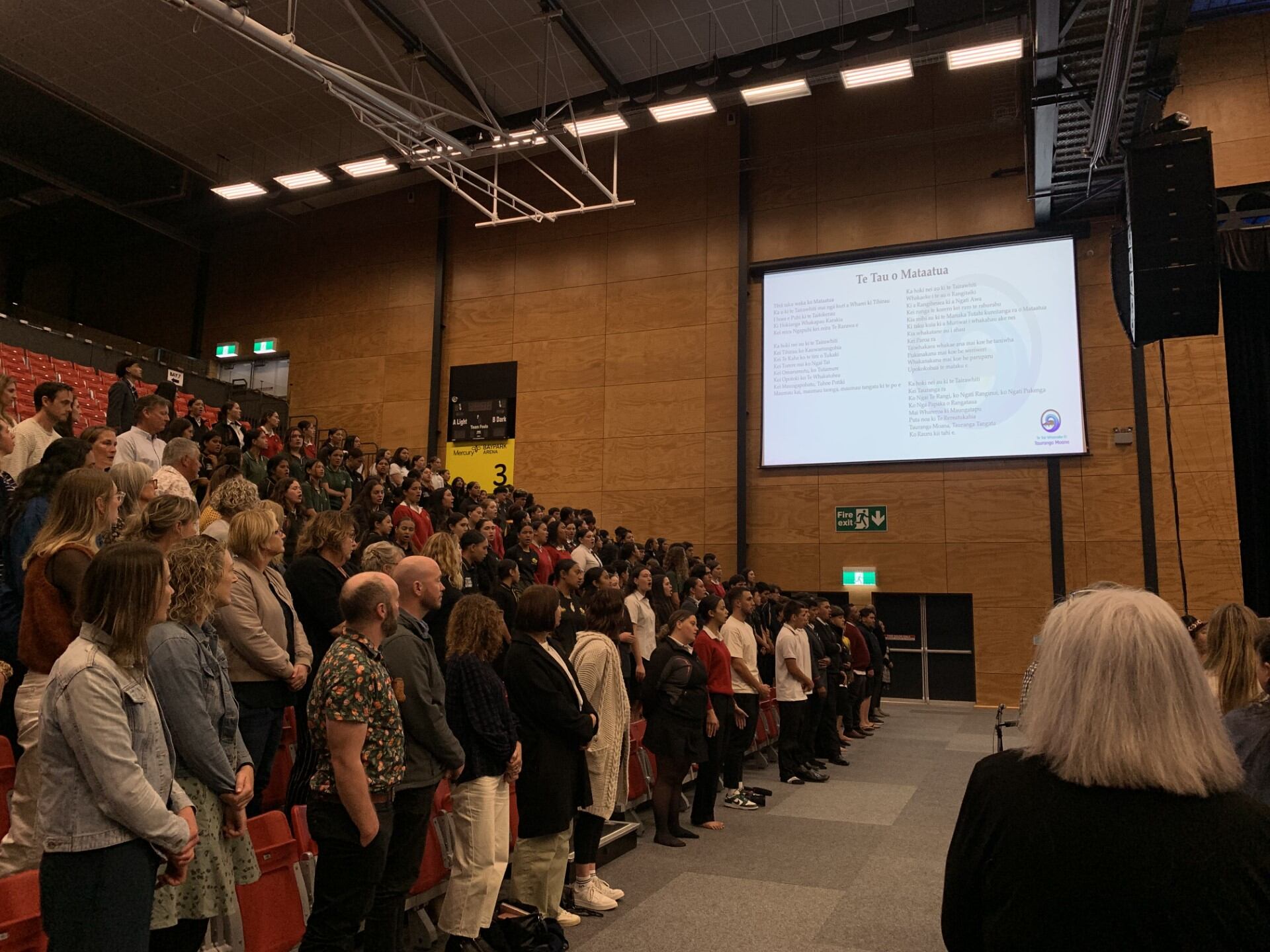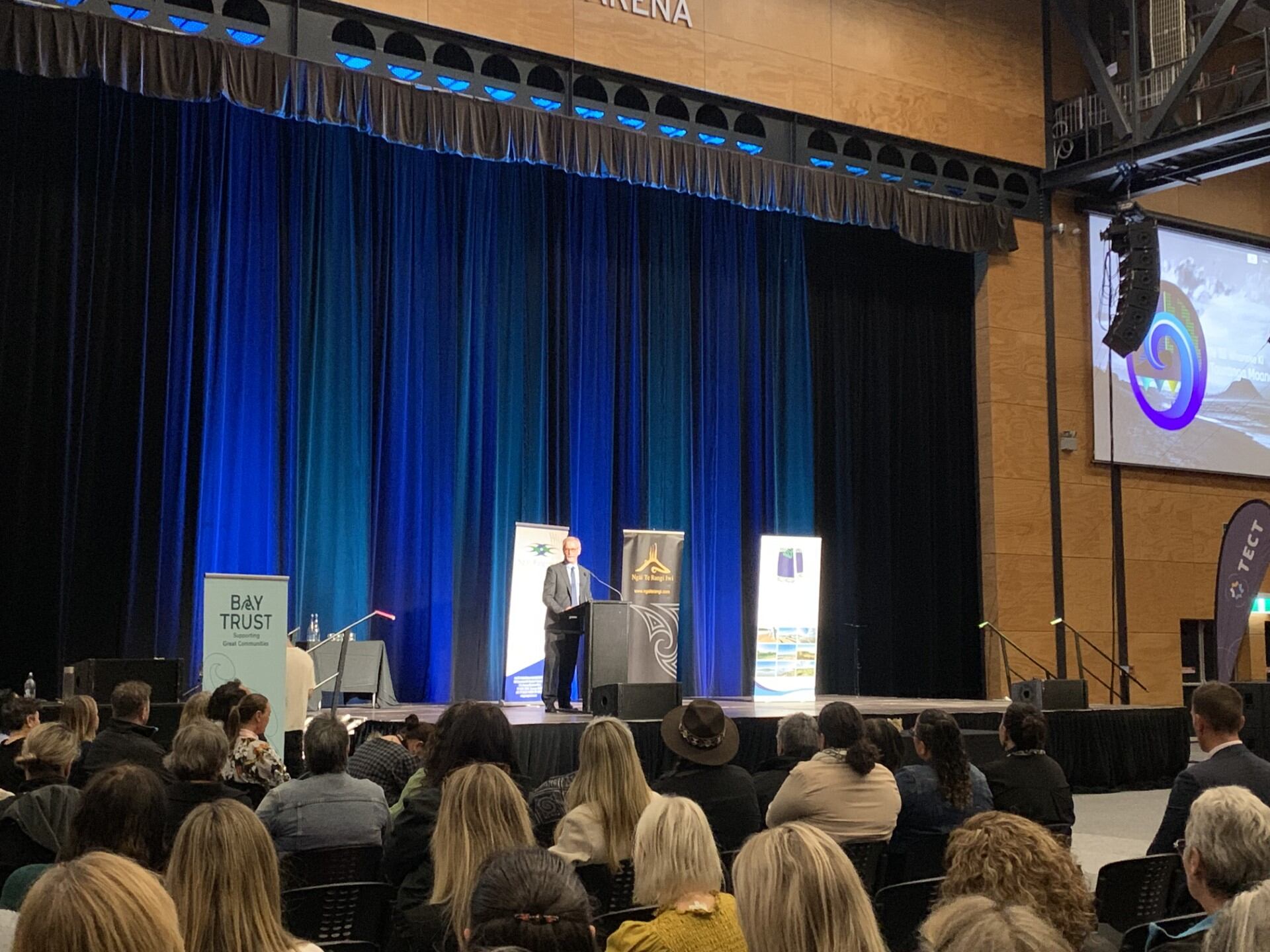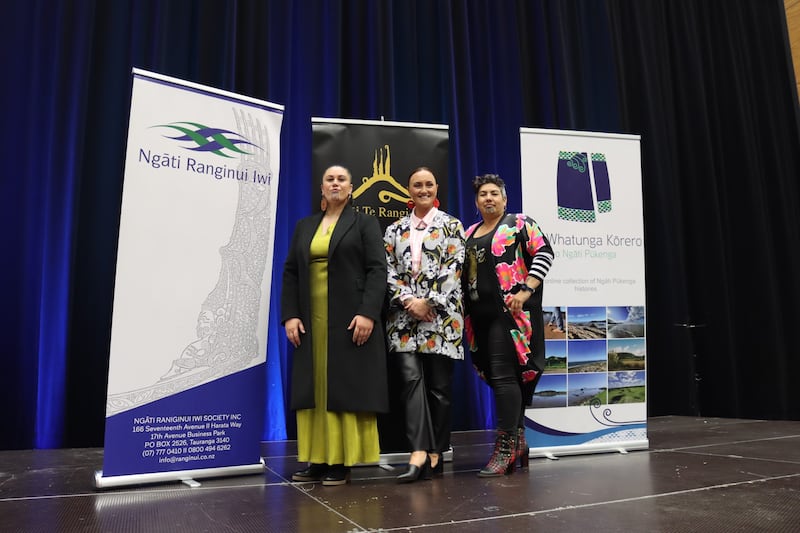Tauranga Moana iwi have gifted the taonga of a new te ao Māori curriculum to schools and kura in the region, allowing Māori history to be “living and breathing” in classrooms and preserving Māori mātauranga (knowledge).
More than 1700 early childhood, primary and secondary teachers gathered at Mercury Baypark for the launch of Te Tai Whanake ki Tauranga Moana Te Ao Māori local curriculum on Monday.
Minister of Education and Tauranga Labour candidate Jan Tinetti and Associate Minister of Education Jo Luxton also attended.
The digital curriculum, which encompasses te reo Māori, local history and tikanga, was developed by Ngāti Ranginui Iwi, Ngāi Te Rangi Iwi and Ngāti Pukenga Iwi in partnership with Tauranga Moana schools.
The project, previously hailed as setting a “new benchmark”, was led by a kaitiaki governance group made up of Communities of Learning Kāhui Ako principal leads and teachers, iwi education managers and project leads. It was chaired by Ōtūmoetai Intermediate School principal Henk Popping.

At the launch, Popping said it was “a long day coming” after a Community of Learning group formed in 2015 and the idea for the project was born.
He said iwi did not want to be “dial a pōhiri” or “the salad dressing” in the project.
“That was the genesis of the whole idea of us working in partnership with our local iwi.”
Popping said the group formed a team and approached iwi to discuss developing a local curriculum for early childhood to Year 13 students. The curriculum needed to be used by mainstream, bilingual and Māori immersion kaiako (teachers) and to suit their needs regardless of their location.
He said consultation involved asking iwi “effectively for their family histories”.
“We had to ask them, ‘What is it you’d like us to teach in te reo, in tikanga?’
“It took us five years of intensive consultation going backward and forwards.”
Popping said the launch was “not the endpoint”.
“We’re still developing the curriculum. It’s going to be a living document for years to come. We’ll be adding to it and we’re hoping it’ll be able to be used for future generations as a taonga that’s been gifted to us by our iwi.”
Popping said Ngāti Ranginui and Ngāi Te Rangi were accredited professional learning and development providers with the Ministry of Education, and kaiako would be guided on how to use the curriculum.
“This project is all about iwi and being led by iwi for iwi.”
Popping acknowledged the project’s funders, including TECT, BayTrust and the Ministry of Education.
“Without them, we wouldn’t even be here.”

Popping told the Bay of Plenty Times after the event the project had received $789,840 from TECT, $225,000 from BayTrust and $168,480 from the ministry for the three-year period between 2022 and 2024.
He said the two main costs were paying personnel to do the consultation and research, and developing the website.
Popping said Communities of Learning took two years from 2015 to develop relationships and trust between schools and iwi. The Covid-19 pandemic also affected the project.
The curriculum included teaching conversational te reo Māori for all year levels, local stories, history and tikanga.
“At ECE [early childhood education] level, it’s a very basic pepeha [introduction in Māori] and then as the students grow in confidence, they can make their pepeha more sophisticated.”
Ngāi Te Rangi deputy chief executive Roimata Ah Sam said the curriculum introduced the iwi’s waiata, narrative and history to the classroom.
“Not everyone has access to that mātauranga [knowledge] and by having access points using technology, building curriculums, it enables our narrative to be on the classroom wall, regardless of where our babies are.”
This was important for intergenerational growth and sustainability in the preservation of mātauranga, Ah Sam said.
Ah Sam said the narrative in the curriculum was Ngāi Te Rangi-centric and was “a true and fair reflection of our understanding of our own history”.
An example she used was the legend of Mauao.
“Mauao is a case of seeing the light. And what gets portrayed in the curriculum is that he was this depressed, loveless mountain but actually, he saw the light.”
Taking the lead in this korero showed tamariki when things got tough, “we actually don’t have to be down and out about it”.
“We’ve got tools in history that reaffirm to us how to overcome those. And that will be living and breathing in their classrooms.”
Ah Sam said the key to the project’s success was for it to continue being iwi-led.
“Our people are not poor and impoverished — our people are resilient and thriving. It enables us to take a lead on that narrative and put us in a place where we embrace it. Being Māori is magical but being Ngāi Te Rangi is incredibly powerful.”
Ngāti Ranginui iwi chief executive Mel Tata said she hoped teachers could use the resource to “really embed some connection to the land”.
This included the taiao (environment), Mauao and “the history from which Tauranga Moana is built”.
Tata explained the resource could be implemented into daily lesson planning. For example, the lesson plan for a younger child for the Battle of Pukehinahina could be around fairness or following rules whereas a Year 13 student would study its history.
Tata said the significance of the project was having the stories of tangata whenua within the school curriculum, particularly for the non-Māori population.
“I have great aspirations of what our population in Tauranga will look like in 20 years’ time based on the learnings of this curriculum.”
-NZME

